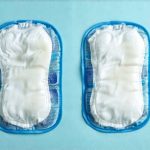Urinary tract infections (UTIs) are remarkably common, especially among women. Many factors contribute to their development, ranging from sexual activity and dehydration to anatomical predisposition. However, the question of whether everyday hygiene products like menstrual pads play a role in increasing UTI risk is one that frequently arises, causing confusion and concern. It’s understandable; we associate these products with intimate areas, and it’s natural to wonder if they might inadvertently contribute to infections. This article aims to delve into this complex topic, exploring the potential links between pad use and UTIs, examining the science behind the concerns, and offering practical advice for minimizing risk.
UTIs are typically caused by bacteria, most commonly Escherichia coli (E. coli), entering the urinary tract. While not always the case, many women experience UTIs after sexual activity or during periods where hygiene practices may be altered. The proximity of the urethra to the anus means that bacteria can easily travel from the digestive system to the urinary tract. Menstrual pads, designed for fluid absorption and containment during menstruation, introduce another layer of complexity to this equation. Understanding how these products interact with the natural flora and environment around the urethra is key to assessing their potential impact on UTI development. It’s important to remember that correlation doesn’t equal causation; just because a woman experiences a UTI while using pads doesn’t automatically mean the pads caused it.
The Potential Mechanisms: How Pads Might Contribute
The concern surrounding menstrual pads and UTIs isn’t unfounded, but the relationship is nuanced. It isn’t necessarily the pad itself that directly causes infection, but rather how its use can potentially alter the environment around the urethra, creating conditions more favorable for bacterial growth and transmission. Several factors contribute to this potential:
- Moisture Retention: Pads are designed to absorb menstrual flow, which means they retain moisture. Prolonged exposure to moisture can create a breeding ground for bacteria. While modern pads are generally designed to wick away moisture efficiently, the extended contact time during menstruation can still lead to a more humid environment than usual.
- Friction and Micro-abrasions: The constant friction between the pad and the vulva can cause micro-abrasions in the skin. These tiny injuries, though often invisible, provide entry points for bacteria. This is particularly true with thicker or less breathable pads.
- Changes to Vaginal Flora: Some scented pads contain fragrances or chemicals that can disrupt the delicate balance of vaginal flora—the naturally occurring community of microorganisms that protect against infection. Disrupting this balance can reduce the number of protective bacteria (like Lactobacilli) and allow harmful bacteria, like E. coli, to flourish.
- Pad Material: Different pad materials have varying levels of breathability and absorbency. Less breathable materials trap more moisture, increasing the risk of bacterial overgrowth. Synthetic materials may also be less compatible with sensitive skin, leading to irritation and potential micro-abrasions.
It’s crucial to understand that these are potential mechanisms; research hasn’t definitively proven a direct causal link between pad use and UTIs for all women. However, these factors highlight why some individuals might be more susceptible than others when using certain types of pads. The type of pad used—its absorbency, material, and presence of fragrances—can significantly influence the level of risk.
The debate often centers around whether the increased moisture from pads is a significant factor compared to other UTI risk factors. While it’s true that many women experience UTIs unrelated to menstruation, the prolonged exposure to moisture during periods may exacerbate existing vulnerabilities or create new opportunities for bacterial infection in susceptible individuals. It’s also important to note that individual anatomy and hygiene habits play a substantial role; some women are simply more prone to UTIs regardless of pad use.
Minimizing Risk: Practical Steps and Pad Choices
Given the potential risks, what can women do to minimize their chances of developing a UTI while using menstrual pads? It’s not about eliminating pad use altogether—for many women, they are an essential part of managing menstruation—but rather about making informed choices and adopting proactive hygiene practices.
Here’s a breakdown of steps you can take:
- Choose the Right Pad: Opt for unscented pads made from breathable materials like cotton or bamboo. Avoid heavily perfumed pads or those containing harsh chemicals, as these can disrupt vaginal flora. Select the lowest absorbency necessary for your flow to minimize moisture retention.
- Frequent Changes: Change your pad regularly—ideally every 4-8 hours—even if it doesn’t feel fully saturated. This helps prevent bacterial buildup and keeps the area drier.
- Proper Hygiene Practices: Practice good hygiene by wiping from front to back after using the toilet, reducing the risk of transferring bacteria from the rectum to the urethra. Wash your hands thoroughly before and after changing your pad.
- Hydration: Drink plenty of water throughout the day to help flush out bacteria from the urinary tract. Staying hydrated is a cornerstone of UTI prevention in general.
- Consider Alternatives: Explore alternative menstrual hygiene products like tampons, menstrual cups, or period underwear if you find pads consistently contribute to UTIs.
It’s important to remember that these are preventative measures; they don’t guarantee complete protection against UTIs. However, by addressing potential risk factors and adopting good hygiene habits, women can significantly reduce their likelihood of developing an infection during menstruation. If you suspect you have a UTI—experiencing symptoms like frequent urination, burning sensation during urination, or cloudy urine—consult your healthcare provider for diagnosis and treatment. Can UTIs cause confusion is also an important consideration as it can affect different age groups.
Addressing Common Concerns & Misconceptions
A significant portion of the anxiety surrounding pads and UTIs stems from misinformation and common misconceptions. One prevalent concern is that certain pad materials are inherently more problematic than others. While it’s true that synthetic materials can be less breathable, leading to increased moisture retention, the issue isn’t necessarily about avoiding all synthetic materials altogether. Many modern pads utilize a combination of absorbent layers with varying properties, including both natural and synthetic fibers, designed to balance absorbency and breathability. The key is to look for pads labeled “breathable” or made from predominantly cotton/bamboo blends.
Another misconception revolves around the idea that thicker pads are always worse. While thicker pads can hold more moisture, they aren’t inherently problematic if used with frequent changes. In some cases, a higher absorbency pad might be preferable to prevent leakage and reduce the need for multiple thinner pads, which could ultimately increase friction and disruption of vaginal flora. It’s about finding the right balance between absorbency and change frequency based on individual needs and flow levels.
Finally, many women mistakenly believe that simply switching to tampons or menstrual cups eliminates all UTI risk during menstruation. While these alternatives may reduce moisture retention around the urethra, they are not foolproof. Tampons can also disrupt vaginal flora if used improperly or left in for extended periods, and menstrual cups require careful cleaning and insertion/removal techniques to prevent bacterial contamination. Ultimately, good hygiene practices remain paramount regardless of the chosen menstrual product. Repeated UTIs can also lead to other complications that should be addressed with a doctor.
The Role of Vaginal Microbiome & Probiotics
The health of the vaginal microbiome—the complex ecosystem of microorganisms residing in the vagina—plays a critical role in UTI prevention. A healthy microbiome is dominated by Lactobacilli bacteria, which produce lactic acid that creates an acidic environment hostile to harmful bacteria like E. coli. Disrupting this balance can increase susceptibility to infection. This is where the connection between certain pad choices and UTIs becomes even more apparent.
- Scented pads and those containing harsh chemicals can negatively impact the vaginal microbiome, reducing Lactobacilli populations.
- Prolonged moisture retention from less breathable pads can create an environment that favors the growth of harmful bacteria over beneficial ones.
Considering this, exploring ways to support a healthy vaginal microbiome is crucial for UTI prevention. One increasingly popular approach is the use of probiotics—live microorganisms that, when ingested or applied topically, can help restore and maintain a balanced microbial community. While more research is needed, some studies suggest that consuming probiotic supplements containing Lactobacilli strains specifically beneficial for vaginal health may reduce the risk of recurrent UTIs.
It’s important to note that probiotics are not a substitute for good hygiene practices or proper medical treatment. They should be viewed as an adjunct therapy—a complementary approach to support overall vaginal health and potentially reduce UTI susceptibility. It’s also vital to consult with your healthcare provider before starting any new supplement regimen, including probiotics, to ensure they are appropriate for your individual needs and won’t interact with any existing medications. UTIs and metallic taste is another symptom worth noting.
When To Seek Medical Attention & Future Research Needs
Ultimately, if you suspect you have a UTI—experiencing symptoms like frequent urination, burning sensation during urination, pelvic pain, or cloudy/bloody urine—it’s crucial to consult your healthcare provider for diagnosis and treatment. Self-treating UTIs can lead to complications and antibiotic resistance. A doctor can accurately diagnose the infection through a urine test and prescribe appropriate antibiotics if necessary.
While this article has explored the potential links between menstrual pads and UTIs, more research is needed to fully understand the complex interplay of factors involved. Future studies should focus on:
- Longitudinal Studies: Tracking women over extended periods to assess pad use patterns and UTI incidence rates.
- Pad Material Analysis: Comparing the impact of different pad materials (cotton, bamboo, synthetic blends) on vaginal microbiome composition and UTI risk.
- Probiotic Effectiveness: Investigating the efficacy of specific probiotic strains in preventing UTIs related to menstruation.
Until more definitive research is available, it’s prudent for women to make informed choices about their menstrual hygiene products, prioritize good hygiene practices, and seek medical attention promptly if they suspect a UTI. Remember that individual experiences vary, and what works for one woman may not work for another. Listening to your body and consulting with your healthcare provider are the best ways to manage your health effectively. Uroflowmetry can also help rule out obstruction if you have concerns about urinary flow. UTIs in babies are different, but the importance of hygiene remains consistent across age groups. And finally, bubble baths and UTIs highlight how seemingly harmless products can contribute to infection risk. UTIs triggering pain is also worth keeping in mind as a potential symptom.





















